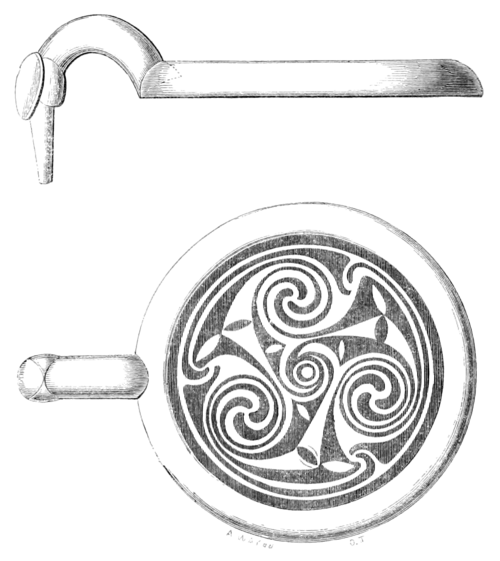every other respect, were furnished with a kind of handle or hook.
The annexed representations give an exact idea of their form; they were ornamented with coarse red and white vitreous pastes or enamels, fixed by fusion in cavities chased out on the surface of the metal. The other two, precisely similar to each other in the enamelled ornament, which is of a cruciform fashion, measure in diameter 212 in., and differ from the first in having no hooks attached to them. The close similarity of the peculiar design of the ornaments to those which characterize the illuminations in the Durham Book of the Gospels, Cotton MS. Nero, D. 4, written about A.D. 686, and in the Psalter, Vesp. A. 1, supposed to have been brought into England by St. Augustine, A.D. 590, but written, probably, at a somewhat later period, would lead to the conclusion that these enamels were works of the sixth or seventh century. It must be noticed that an enamelled ornament, precisely similar in fashion and adjustment, was found placed near the shoulder of a skeleton interred under a low, or barrow, on Middleton moor, Derbyshire[1]. Burial in tumuli
- ↑ This discovery is noticed by Pegge, Archæologia, vol. ix. p. 190. The body lay east and west, on the natural surface of the soil.

